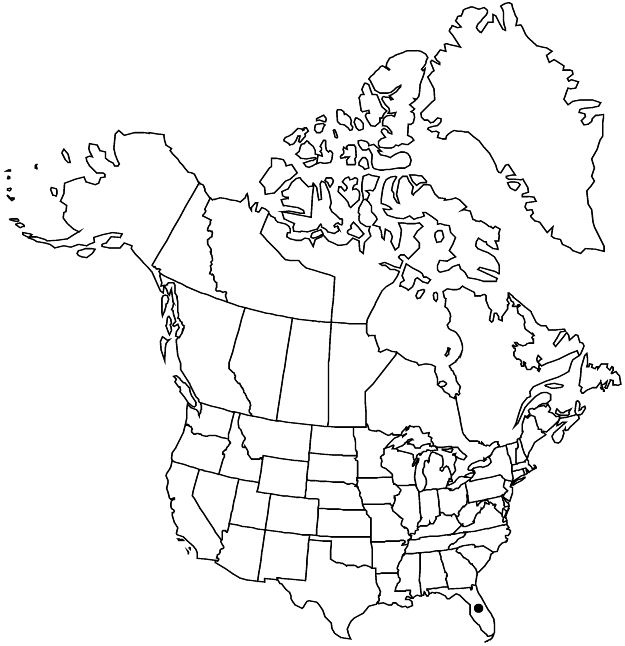Difference between revisions of "Phyllanthus liebmannianus subsp. platylepis"
Brittonia 22: 57. 1970.
FNA>Volume Importer |
FNA>Volume Importer |
(No difference)
| |
Revision as of 18:22, 24 September 2019
Herbs, perennial, with rhizomes, monoecious (sometimes staminate), 3–5 dm, branching not phyllanthoid. Stems terete, not winged, glabrous. Leaves spiral, all well developed; stipules auriculate, pink to brown with pale margins; blade obovate, 10–24 × 5–10 mm, base acute, apex rounded, sometimes apiculate, both surfaces glabrous. Inflorescences cymules, bisexual or staminate, with 1 pistillate flower and 3–6 staminate flowers or with 7–9 staminate flowers. Pedicels: staminate 2–3.5 mm, pistillate spreading in fruit, 4.5–8 mm. Staminate flowers: sepals 6, greenish yellow, flat, 1.2–1.8 mm; nectary extrastaminal, 6 glands; stamens 3, filaments connate 85–90% length. Pistillate flowers: sepals 6, green with narrow pale margins, flat, 2.8–3.5 mm, pinnately veined; nectary 6-lobed. Capsules 4 mm diam., smooth. Seeds uniformly brown, 1.7–1.8 mm, irregularly verrucose.
Phenology: Flowering and fruiting spring.
Habitat: Hammocks, flatwoods, limestone soils.
Elevation: 0–20 m.
Discussion
Subspecies platylepis is restricted to northwestern peninsular Florida (Dixie, Lafayette, Levy, and Taylor counties), where its habitat is threatened by logging. Subspecies liebmannianus grows in eastern Mexico and northern Central America; its conservation status is secure. The differences between the subspecies are small, mainly that subsp. liebmannianus tends to have taller stems (to 1 m) that arise singly from the rhizome versus in clusters in subsp. platylepis, and the subspecies perhaps do not warrant recognition. See 1. Phyllanthus polygonoides for a discussion of the relationships between the two species.
Selected References
None.
